- Introduction to the $2 Dollar Bill
- Capturing the Intrigue: Why the $2 Bill Fascinates Collectors and Historians Alike
- The Storied Journey of the $2 Bill
- Unraveling the Mysteries: Myths and Realities
- Collecting $2 Bills: A Niche Pursuit
- $2 Bills in Society: More Than Just Money
- The Practical Side of Collecting $2 Bills
- Conclusion: The Continuing Legacy of the $2 Bill in American Currency
Introduction to the $2 Dollar Bill
Imagine a piece of currency so shrouded in mystery and legend that it stirs curiosity, confusion, and even controversy. The $2 dollar bill, an often overlooked and misunderstood facet of American currency, is exactly that. Known affectionately as the “Tom” due to its portrait of Thomas Jefferson, this bill has navigated a complex journey through American history and culture.
From its inception during the Civil War era to its curious role in various economic and societal phases, the $2 bill has always been more than just money. It’s a symbol of the rare, the unusual, and sometimes, the misunderstood. Its story intertwines with cultural lore, economic shifts, and even superstitions, making it a captivating subject for collectors and historians alike.
But why has this particular denomination, which holds the same legal tender status as its more common counterparts, become a subject of such fascination and mystique? The answer lies in a tapestry woven from its unique historical journey, cultural significance, and rarity in circulation.
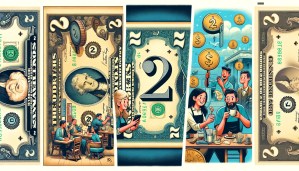
Capturing the Intrigue: Why the $2 Bill Fascinates Collectors and Historians Alike
In 1862, when the first $2 bills were printed, they represented a significant monetary value, often more than the average American’s daily wage. Yet, their journey has been anything but smooth. Over the years, these bills have been linked to various controversies and superstitious beliefs, from election rigging to gambling and even being a harbinger of bad luck.

Despite these challenges, or perhaps because of them, the $2 bill has carved out a unique niche in American culture. It’s a piece of currency that’s often saved rather than spent, hoarded rather than circulated. It has appeared in movies, been a favorite among famous personalities, and has even been used in marketing campaigns. Its rare sightings in everyday transactions only add to its allure.
As we embark on this exploration of the $2 bill, we will unravel its history, debunk myths, delve into its cultural impact, and provide insights for collectors. Join us on this journey through the fascinating world of America’s rarest bill, where each note tells a story of a nation’s economic evolution and cultural tapestry.
The Storied Journey of the $2 Bill
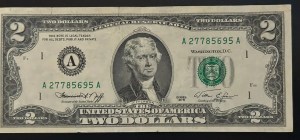
Origins: The Birth of a Rarity
The $2 bill’s history is as rich and intricate as its design. The journey began in March 1862, during the turbulence of the Civil War, when the U.S. government issued its first paper bills, including the $2 note. Initially, the bill featured a portrait of Alexander Hamilton. However, in a nod to the evolving face of currency, the design soon shifted to a more familiar figure. By 1869, the $2 United States Note proudly bore the portrait of Thomas Jefferson, situating the third President’s image to the left, with a vignette of the United States Capitol at the center.
Evolution: From Early Designs to Modern-Day Notes
The $2 bill underwent multiple redesigns, reflecting the changing tides of U.S. currency. In the latter part of the 19th century, the note evolved from featuring allegorical figures and prominent politicians, like Civil War General Winfield Scott Hancock and U.S. Treasury Secretary William Windom, to the iconic Educational Series Silver Certificate in 1896. This note was a work of art, with its obverse covered in intricate allegorical artwork, symbolizing the progress of science and technology.
In 1928, as part of a broader redesign and downsizing of U.S. currency, the $2 bill was reissued solely as a United States Note. The note retained Jefferson’s portrait but introduced a new reverse featuring his home, Monticello. This design persisted with minor changes, such as the addition of the motto “IN GOD WE TRUST” in 1963, until the bill’s temporary discontinuation in 1966.

The Bicentennial Rebirth
In a significant turn of events, the $2 bill was resurrected in 1976. This reissuance, coinciding with the U.S. Bicentennial, was not just a nod to history but also a cost-saving measure. The Series 1976 $2 bills featured the same portrait of Jefferson but introduced a bicentennial-themed design on the reverse, depicting John Trumbull’s “Declaration of Independence.” This design choice, while not intended to commemorate the Bicentennial specifically, fueled public perception of the bill as a collectible item, leading many to save these notes rather than circulate them.
The $2 bill’s evolution and intermittent circulation reflect not only changes in design and currency policy but also shifts in public perception and usage. Each iteration of the bill adds a new chapter to its storied history, making it a captivating subject for collectors and historians alike. As we continue to explore the journey of the $2 bill, its enduring legacy in American culture becomes increasingly apparent.
Unraveling the Mysteries: Myths and Realities
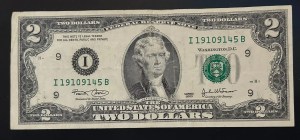
Dispelling Myths: The Truth About Circulation and Discontinuation
The $2 bill’s journey through American history is not just a story of currency evolution but also a saga of myths and misconceptions. One common myth is that $2 bills are no longer produced and have been phased out. Contrary to this belief, the U.S. has consistently printed new $2 bills every year since their reintroduction in 1976. However, their production runs are smaller compared to other denominations, contributing to their rarity but not extinction.
The Bicentennial and Beyond: Understanding Collector Myths
Another widespread misconception is that all $2 bills, especially the bicentennial series, are highly valuable collector’s items. While certain rare editions and misprints may hold collectible value, the majority of circulated $2 bills do not command a premium above their face value. The belief that these bills are precious keeps many tucked away in private collections rather than in circulation.
Bad Omens and Superstitions
Perhaps the most intriguing aspect of the $2 bill’s history is its association with bad luck and superstition. Dating back to the late 1800s, the bill’s connection with the number “deuce” – a term also used for the devil – led to beliefs of impending doom or financial ruin for those who possessed it. This superstition was so strong that people would tear off a corner of the bill or quickly spend it to rid themselves of the perceived curse.
Retailer Resistance and Counterfeiting Concerns
When the $2 bill returned in 1976, it faced resistance from retailers and the public. Many businesses were reluctant to accept them due to practical issues like the lack of designated slots in cash registers and confusion with $1 bills. Some even mistakenly believed these bills to be counterfeit and refused them in transactions. While there have been instances of counterfeit $2 bills, the modern series, printed from 1976 onwards, incorporate advanced security features, making them difficult to forge convincingly.
The Rarity Dilemma
The rarity of the $2 bill in everyday transactions has led to further distrust and disbelief. Their scarcity in circulation has caused many to incorrectly assume that these bills are old collector’s items or even bogus currency. Yet, in reality, they are authorized legal tender like any other denomination, with hundreds of millions sitting in Federal Reserve vaults, ready for circulation.
The $2 bill’s journey through American culture is a fascinating blend of fact and fiction. It has navigated through superstition, practical challenges, and misconceptions to maintain its status as a legal tender, albeit a rare and often misunderstood one. As we delve deeper into its cultural impact, it becomes evident how this unique denomination has shaped and been shaped by the narrative of American currency.
Collecting $2 Bills: A Niche Pursuit
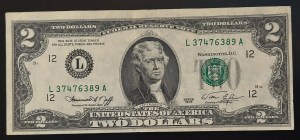
The Collector’s Quest: Star Notes and Unique Serial Numbers
Collecting $2 bills is a captivating endeavor, largely due to their unique history and the variety of designs and series issued over the years. Collectors often seek out specific series or unique features in these bills. For instance, Star Replacement Notes, identified by a star next to the serial number, are particularly scarce and collectible. Even circulated star notes can be valuable, ranging from $5 to $50, depending on their condition and rarity.
Enhanced Collectibles: Separating Fact from Fiction
While all $2 bills hold historical and cultural significance, not all of them are valuable collectibles. The Series 1976, 1995, 2003, 2003A, 2009, and 2013 notes, for example, are only worth their face value in circulated condition. However, in uncirculated condition, they can be worth $5-10. Larger size bills issued prior to 1928 are highly collectible and, even in very worn condition, can be worth around $100. Uncirculated examples of these older bills can command prices ranging from $500 to tens of thousands of dollars, making professional evaluation and grading essential.
Strategies for Collecting
- Series and Variants: Focus on collecting different series of $2 bills, each with its unique history and design. For instance, the Series 1928 notes command $60 circulated and $100 uncirculated, while Series 1953 are worth $10 and $25 respectively.
- Condition and Grading: The condition of the bill significantly impacts its value. Collectors should aim for bills in uncirculated or very fine condition. It’s advisable to get valuable bills professionally graded.
- Historical Significance: Certain $2 bills are sought after for their historical significance. For example, notes from the Civil War era or those issued during the Great Depression carry a rich historical context that adds to their collectibility.
- Rarity and Uniqueness: Scarce editions, like blue seal $2 bills from the Series 1918, are highly valued by collectors. These can be worth from $350 in worn condition to thousands in an uncirculated state.
- Educational Pursuit: Understanding the history behind each series and variant of the $2 bill enriches the collecting experience. Collectors often research the context in which different bills were issued to appreciate their significance fully.
- Networking with Other Collectors: Engaging with other currency collectors can provide insights into rare finds and exchange opportunities. Collector clubs and online forums are valuable resources for connecting with like-minded enthusiasts.
Collecting $2 bills is not just a hobby: it’s a journey through American history and currency evolution. Each bill tells a story and collecting them is a way to preserve and honor these narratives. As collectors delve into this niche, they discover a world where history, art, and economics converge, creating a rewarding and educational pursuit.
$2 Bills in Society: More Than Just Money
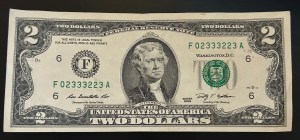
The Economic and Cultural Impact
The $2 bill, despite its relative rarity, has carved a unique niche in American society and culture. Its use extends beyond mere financial transactions; it serves as a symbol, a marketing tool, and even a statement.
- Symbolic Usage: In some cases, $2 bills are used for symbolic reasons. For instance, Clemson University fans are known to use $2 bills to show their presence in away games, signifying the economic impact of their fan base. Similar symbolic usage has been observed in other contexts, like horse race gambling and tipping.
- Marketing and Memory: Some businesses, appreciating the rarity of the $2 bill, use it as a marketing strategy. For example, a wine store owner mentioned how the uniqueness of the bill helped customers remember his store and served as a conversation starter when those bills were spent elsewhere.
- Cultural Acceptance and Usage Trends: From small retailers to adult entertainment venues, the $2 bill has been gradually shedding its image as “play money” and finding its way into more wallets. This trend indicates a growing acceptance and circulation of the bill in various sectors of the economy.
Pop Culture and Entertainment
The $2 bill has not only made its mark in the economic domain but also in popular culture and entertainment. Its unique design and rarity have led to its inclusion in movies, TV shows, music, and books. Notably, the 1976 series of $2 bills was prominently featured in the movie “The Sting,” sparking renewed interest among collectors. Celebrities like Johnny Carson, Jay Leno, and Martha Stewart have also expressed their fondness for the $2 bill, further elevating its status in popular culture.
Factors Influencing the Bill’s Popularity
Several factors have been hypothesized to influence the recent increase in the usage of $2 bills. These include inflation, the introduction of the Sacagawea $1 coin, and immigration patterns, especially from regions where currency in twos is common. These factors suggest a complex interplay of economic and cultural elements contributing to the bill’s growing presence.
In summary, the $2 bill transcends its face value, embedding itself in various aspects of American life. From its symbolic use by sports fans to its growing acceptance in commerce and its presence in pop culture, the $2 bill is more than just currency: it’s a fragment of cultural history, an economic tool, and a pop culture icon.
The Practical Side of Collecting $2 Bills
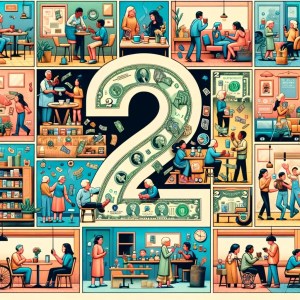
How to Identify and Value $2 Bills
Identifying and valuing $2 bills requires a mix of knowledge and keen observation. Collectors often look for unique features like serial numbers, star notes, and the series to which the bill belongs. For instance, star notes, marked with a star next to the serial number, are rarer and can be more valuable. The condition of the bill also plays a crucial role in determining its value. Bills in uncirculated or very fine condition generally fetch higher prices. The historical context, such as bills from the Civil War era or those issued during the Great Depression, adds to the collectibility and value.
Building and Maintaining a $2 Bill Collection
- Start with Common Series: Beginners can start by collecting more common series like the 1976, 1995, or 2003 series. These are relatively easy to find and provide a good starting point.
- Seek Out Rarer Bills: For more seasoned collectors, seeking out rarer bills like the large-size notes issued before 1928 or the blue seal $2 bills from the Series 1918 can be a thrilling challenge. These rare bills, in good condition, are highly valued in the collector’s market.
- Proper Storage and Handling: Proper storage and handling are crucial to maintaining the condition of the bills. Collectors should use currency holders or albums to protect the bills from damage and environmental factors.
- Continuous Learning and Networking: Engaging with other collectors, joining numismatic clubs, and participating in online forums can provide valuable insights and opportunities to enhance one’s collection.
- Professional Grading for Valuable Bills: For particularly valuable bills, professional grading by a recognized currency grading service can provide an authoritative assessment of the bill’s condition and value.
Collecting $2 bills is not only a fascinating hobby but also a way to connect with history and culture. Whether it’s for personal satisfaction, historical interest, or investment, building and maintaining a $2 bill collection can be a deeply rewarding experience.
Tools for Determining the Value of $2 Bills
Collectors and enthusiasts of $2 bills often seek to determine the value of their notes. Several online tools and resources are available for this purpose, each offering unique features and insights:
U.S. Currency Auctions (USCA)
- Description: USCA provides a value chart for $2 bills, aiding users in assessing the worth of their notes based on the year and type.
- Usefulness: This site is particularly helpful for quickly determining the general value of $2 bills from different series and eras. For instance, it indicates that $2 bills from 2003 to 2017 typically hold face value, whereas older notes may be more valuable.
- Website: U.S. Currency Auctions
PaperMoneyGuide.com
- Description: This website features a free U.S. paper money value estimator, covering a wide range of notes, including $2 bills.
- Usefulness: Users can select the denomination and series of their bill to get an estimated value. This tool is great for a quick reference to understand the potential worth of commonly encountered U.S. notes.
- Website: PaperMoneyGuide
My Currency Collection
- Description: Offers a fancy serial number checker for $2 bills.
- Usefulness: By entering the serial number of a $2 bill, users can find out if it has a unique or valuable pattern. Serial numbers that are unusual or ‘fancy’ can significantly increase a bill’s worth.
- Website: My Currency Collection
GOBankingRates
- Description: Provides information on the value of certain $2 bills, especially focusing on uncirculated notes from older series.
- Usefulness: This site can be a guide to understanding the potential high value of $2 bills, such as an uncirculated note from 1890, which could be worth between $550 to $4,500 or more, depending on condition.
- Website: GOBankingRates
Heritage Auctions
- Description: Primarily focuses on high denomination bills but offers insights into currency valuation that are applicable to $2 bills.
- Usefulness: The site outlines factors that impact the value of currency, like series, condition, and rarity, which are essential for evaluating $2 bills.
- Website: Heritage Auctions
Each of these platforms offers a distinct approach to valuing $2 bills, from series and condition checks to evaluations of unique serial numbers. Collectors and currency enthusiasts can use these resources to gain a comprehensive understanding of their $2 bills’ potential worth.
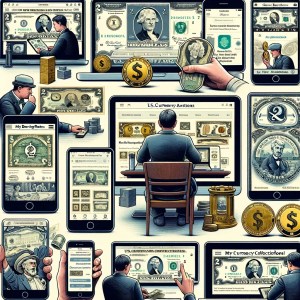
Conclusion: The Continuing Legacy of the $2 Bill in American Currency
The $2 bill, America’s rarest and most enigmatic currency, has a legacy that extends far beyond its monetary value. Its journey through American history and culture illustrates a fascinating narrative of change, superstition, and rarity.
The Historical and Cultural Journey
From its inception during the Civil War to its crucial role in the nation’s bicentennial celebrations, the $2 bill has been a witness to pivotal moments in American history. The bill’s rarity and distinct design have made it a sought-after item in numismatics, offering a window into the nation’s past. Despite common misconceptions about its value and usage, the $2 bill remains a legal tender and an intriguing part of the currency collection landscape.
Rarity and Collectibility
In the world of numismatics, the $2 bill holds a special place. Its rarity and the fascinating stories behind different series make it an attractive pursuit for collectors. Star Replacement Notes, particularly, are scarce and sought after, fetching significant values depending on the series and condition. The various designs and sizes of the $2 bill, from the large-size notes predating 1928 to the bicentennial series, offer collectors a rich diversity of options to explore and cherish.
Cultural Resonance and Acceptance
Beyond its monetary and collectible value, the $2 bill resonates culturally. Its appearances in popular culture, such as movies and music, have cemented its place in the American psyche. Despite its limited circulation, efforts by enthusiasts to use $2 bills in daily transactions have gradually increased its visibility and acceptance.
The Future of the $2 Bill
As we look to the future, the $2 bill remains a symbol of America’s rich monetary history and cultural diversity. Its journey from a widely used currency to a collector’s item and cultural icon is a testament to its enduring allure. Whether seen as a relic of the past or a piece of living history, the $2 bill continues to fascinate and intrigue, securing its place in the annals of American currency.
In conclusion, the $2 bill’s journey through American history is not just a tale of a piece of currency. It is a story interwoven with the nation’s economic, cultural, and historical fabric, making it a unique and invaluable piece of Americana. Whether for collectors, historians, or the curious public, the $2 bill remains a fascinating subject, rich in history and full of potential for future discovery.
Join the Simply Sound Society
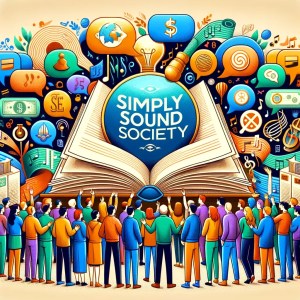
We hope you enjoyed this journey through the fascinating world of the $2 bill. If you’re as passionate about uncovering the hidden gems of currency, history, and more, we have just the place for you.
Introducing Simply Sound Society – our exclusive forum dedicated to all things Simply Sound Advice. It’s a community where enthusiasts like you can delve deeper, share insights, and connect with like-minded individuals.
Why Join?
- Exclusive Content: Get first access to our meticulously researched articles and in-depth discussions.
- Connect with Experts and Enthusiasts: Engage in conversations with others who share your interests in finance, collectibles, and history.
- Share Your Discoveries: Found something intriguing? The Simply Sound Society is the perfect platform to showcase your findings and gain insights from others.
Becoming a part of the Simply Sound Society means joining a community that values knowledge, curiosity, and a shared passion for discovery.
How to Subscribe
Subscribing is easy – just visit Simply Sound Society and sign up. It’s your gateway to a world of exclusive content and engaging discussions.
So, what are you waiting for? Join the Simply Sound Society today and be a part of a community that’s as curious and enthusiastic as you are!
Don’t Forget to Check Out These Other Awesome Articles:
- Star Note Lookup: The Art of Valuing Your Star Note
- Unveiling the Mystique of Blue Seal Silver Certificates: A Journey Through U.S. Monetary History
- Why Money Can Buy Happiness: Unlocking the Path to Joy
- Fast Cash: Legit Ways to Make Money
- The Credit Pros: Enhancing Your Financial Journey
- Navigating Finances in Relationships: Balancing Money and Emotions in Personal Bonds















